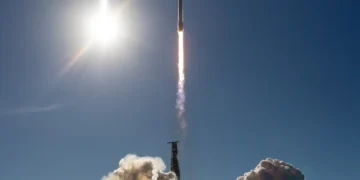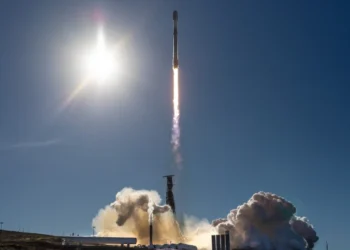Karachi – Popular short-video platform TikTok has released its Community Guidelines Enforcement Report for the first quarter of 2025, offering insight into the platform’s content moderation efforts and the enforcement of its policies across different regions, including Pakistan. The report reveals that between January and March 2025, 24,954,128 videos were removed from Pakistan for violating TikTok’s Community Guidelines—a staggering figure that highlights the scale of moderation in the country.
The report, part of TikTok’s global transparency initiative, reflects the platform’s commitment to ensuring user safety, combating misinformation, and promoting ethical digital behavior.
TikTok’s Global Moderation in Q1 2025: An Overview
In the global context, TikTok deleted a total of 211 million videos during Q1 2025, which amounts to approximately 0.9% of all content uploaded to the platform within that period. This figure underscores the platform’s massive user base, the volume of daily uploads, and the complex task of moderating content across diverse languages, cultures, and regions.
Of the 211 million videos removed globally:
- 184,378,987 videos were automatically identified and deleted using AI-powered moderation systems.
- 7,525,184 videos were later reinstated after further human review, showing the importance of manual oversight alongside automated systems.
- The pre-deletion rate—which refers to content removed before being widely viewed—was an impressive 99.0%.
- 94.3% of flagged content was removed within 24 hours, minimizing the potential for harm.
Pakistan’s Content Moderation Landscape: A Closer Look
TikTok’s latest enforcement report reveals that Pakistan remains one of the countries with the highest volume of content moderation activity. From January to March 2025:
- 24,954,128 videos were deleted for violating community standards.
- 99.4% of these videos were removed proactively—before being reported by users.
- 95.8% were taken down within 24 hours, indicating the efficiency and responsiveness of TikTok’s moderation system in Pakistan.
This high deletion rate reflects both the volume of content being produced in Pakistan and the platform’s strict enforcement policies in the country.
Why Were These Videos Removed? Content Categories and Violations
TikTok’s report breaks down the deleted videos by category of violation, helping users understand the platform’s content moderation priorities.
1. Sensitive or Mature Content – 30.1%
A significant portion—nearly one-third—of deleted videos contained sensitive or adult content. This includes:
- Inappropriate sexual imagery
- Nudity
- Explicit or suggestive language
- Content that may be unsuitable for younger audiences
TikTok, which is especially popular among teenagers and young adults, enforces strict age-appropriate content policies, and this category continues to be one of the most commonly violated.
2. Privacy and Security Violations – 15.6%
Another major concern is the violation of privacy and security standards. Videos in this category may have included:
- Sharing of personal or confidential information
- Unauthorized surveillance or filming
- Doxxing or non-consensual content publication
Protecting user privacy has become increasingly important, especially in a digital age where content can be widely disseminated in seconds.
3. Safety and Decency Violations – 11.5%
Videos flagged for safety and decency often involve:
- Dangerous stunts or challenges
- Bullying or harassment
- Hate speech and discriminatory language
- Promotion of self-harm or eating disorders
TikTok has pledged to maintain a safe and respectful environment, and this category of violation reflects its proactive efforts in removing harmful behavior.
4. Misinformation – 45.5%
Perhaps the most concerning statistic is that almost half of all deleted content—a massive 45.5%—was flagged as misinformation. This includes:
- False news about politics, health, or public safety
- Conspiracy theories
- Manipulated or misleading claims
- COVID-19 or vaccine-related disinformation
The surge in misinformation highlights how social media platforms have become battlegrounds for narrative control, making fact-checking and moderation more important than ever.
5. Artificial Intelligence (AI)-Generated or Edited Media – 13.8%
With the rise of AI-generated content, including deepfakes and voice manipulation, TikTok has had to update its guidelines to address potential misuse. In Q1 2025:
- 13.8% of removed videos fell under this category.
- These videos often blurred the lines between fiction and reality, raising ethical and safety concerns.
TikTok has introduced labeling tools and watermarking policies to make AI-generated content more transparent to users.
Automation and Artificial Intelligence in Content Moderation
TikTok has invested heavily in AI-based moderation systems capable of:
- Detecting nudity, hate speech, violence, and graphic content in real-time
- Pre-emptively removing content before it gains traction
- Tagging questionable uploads for manual review
The company reports that 184 million out of 211 million deleted videos in Q1 2025 were removed by automated moderation tools, demonstrating the growing reliance on machine learning algorithms in content governance.
However, TikTok also acknowledges the limitations of automation. This is why:
- 7.5 million videos were reinstated after appeals and human review, showing the need for balanced oversight.
- Cultural and contextual understanding often requires manual moderation, especially in linguistically diverse countries like Pakistan.
Pakistan’s Relationship with TikTok: A History of Tensions and Regulations
Pakistan has had a complicated relationship with TikTok, characterized by a series of bans, warnings, and conditional reinstatements.
Since its rise in popularity:
- The app has faced multiple temporary bans due to “immoral” and “indecent” content.
- The Pakistan Telecommunication Authority (PTA) has issued repeated warnings to improve content moderation and align with local norms.
- TikTok has since established a local content moderation team, engaged with civil society, and enhanced its regional policy enforcement.
Despite this, TikTok remains one of the most downloaded and widely used social media apps in Pakistan, especially among users aged 16 to 30.
The Challenge of Balancing Freedom and Responsibility
TikTok’s challenge—like all global platforms—is to balance:
- Freedom of expression
- Local cultural sensitivities
- Global community standards
With Pakistan being a high-content-generation country, the platform must navigate:
- Religious and social sensitivities
- Political polarization
- Digital literacy gaps
Removing nearly 25 million videos in just three months reflects a massive compliance effort, but also raises concerns about:
- Transparency of guidelines
- Accountability in decision-making
- The need for user education on acceptable content
Community Engagement and Digital Literacy
TikTok has rolled out several initiatives to:
- Educate users on responsible content creation
- Promote digital safety and cyberbullying awareness
- Partner with local organizations for youth safety campaigns
However, experts argue that long-term digital literacy programs are necessary to:
- Reduce content violations
- Empower users to distinguish misinformation
- Help creators understand ethical boundaries
Conclusion: A Look Ahead
TikTok’s Q1 2025 Community Guidelines Report underscores the complexity and scale of moderating content in today’s digital era. With Pakistan ranking among the top countries in content removal, it is clear that policy enforcement, cultural awareness, and community engagement must go hand-in-hand.
As digital platforms continue to grow, the need for:
- Consistent enforcement of guidelines
- Transparent appeals processes
- Investment in content moderation technology
- And collaborative efforts with local authorities
…becomes more urgent than ever.
For Pakistan, the key lies in building a digital ecosystem that promotes freedom, responsibility, and safety—while ensuring platforms like TikTok remain spaces for creativity, not conflict.

























